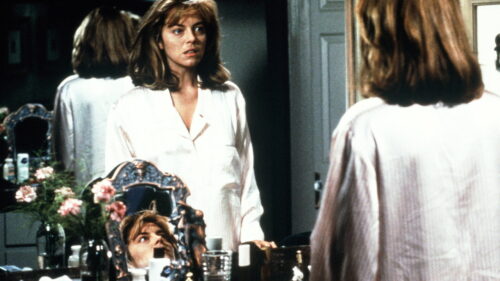Gordon Willis, the influential cinematographer of the ‘Godfather’ films, ‘Annie Hall,’ ‘Manhattan,’ ‘The Parallax View,’ ‘All the President’s Men’ and other classics died this weekend at 82. I briefly talked about his legacy with Robert Yeoman, the cinematographer for all of Wes Anderson’s features.
Matt Zoller Seitz: Could you talk to me a bit about Gordon Willis? What did his work mean to you, and to your profession?
Robert Yeoman: Gordon Willis was one of the great cinematographers. He really pushed the limits of cinematography, particularly in the way he shot interiors. We’ve all heard those stories about how, on ‘The Godfather,’ the studio was worried that the interiors were too dark, but Francis Coppola said, ‘No, no, that’s how I want it in this movie.’ [Willis] had a very strong vision, and he put a mark on every movie that he shot. Even in his collaborations with Francis Ford Coppola, Woody Allen and other strong directors, you could see the Gordon Willis trademark on it.
The key to his work was its simplicity. His photographic approach was, ‘The camera goes here.’ It was very simple. The idea was, you don’t make camera moves just for the sake of making camera moves. If the scene calls for you to move the camera, then you move it, but not in a way that’s showy. His work favored beautiful, classic photography. He was very much a pragmatist about that, and I think a lot of cinematographers were influenced by his example.
MZS: I’ve read interviews with Gordon Willis where he talked about the value of taking things away rather than adding things. He once made a comment to the effect that when there is a problem realizing the potential of a scene, the solution of many cinematographers, indeed many directors, is try to solve it by adding things. Willis had the opposite approach. He said that his solution was to take things away, and that it seemed to work pretty well for him. It might partly explain his signature, his use of negative space and darkness to fill up a frame and highlight the important action within it.
Yeoman: The simplest solution is almost always the best. I find that many times, in commercials, the less experienced directors are constantly trying to spice it up and do something that, in the end, detracts from the scene. It’s artificial.
If I can do something with one light, I’d rather do it with one light. If I can do it with no lights, I’ll do it with no lights. I don’t want to overcomplicate anything. Sometimes a scene requires a hundred lights, but in general I do think the simplest approach is the best, and I strive to do that. It’s also the fastest approach, which is an important factor when you’re shooting, for sure.
MZS: If you were to revisit the work of Gordon Willis, what movies do you think you’d reach for?
Yeoman: I love the ‘Godfather’ movies. They just look so great. I remember that when I saw the first one as a kid, even though I was not a cinematographer, I recognized that there was something special going on there. That was certainly a movie that inspired many. ‘Manhattan’ was another one. I remember that when I saw that film I was just inspired, so inspired, by the cinematography. I know that I’ve said before that as a cinematographer I generally want to try to stay in the background, but I love how in that film Gordon Willis just jumps out at you!
But for me, those are the two. Those are my favorites.













